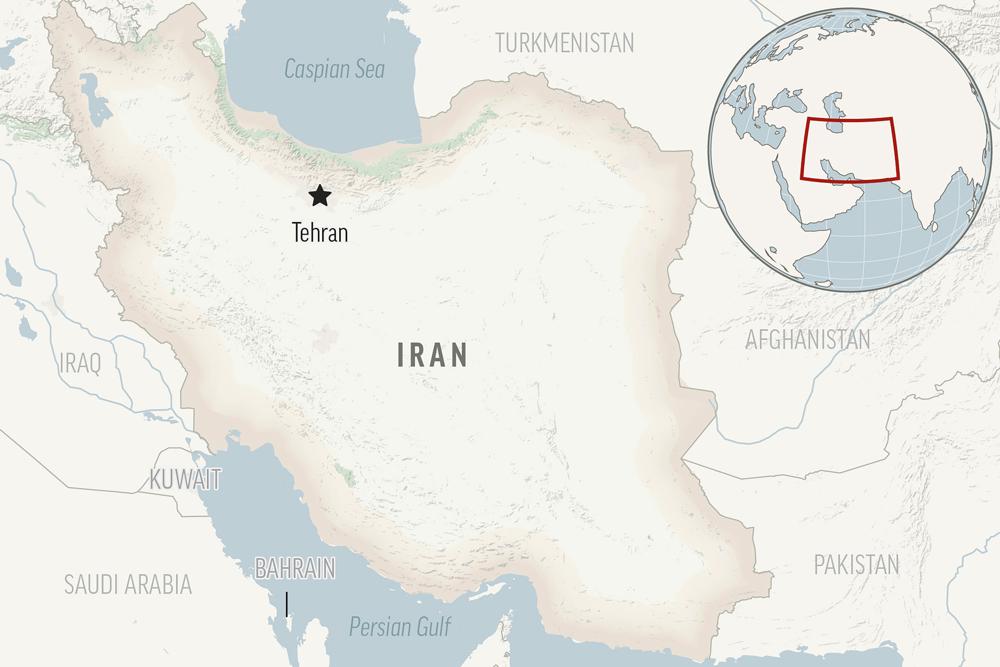Iran’s president accused the U.S. on Thursday of conducting a “failed policy of destabilization” targeting his nation after Iranians in cities nationwide protested the death of a 22-year-old woman in the custody of the country’s morality police.
President Ebrahim Raisi’s repeated comments have tried to blame the demonstrations sparked by the death of Mahsa Amini as a Western plot, even as school-age protesters remove their mandatory headscarves, or hijabs. They come after protests in cities across Iran on Wednesday, with videos circulating of security forces apparently firing toward demonstrators and using violence to put down the dissent.
The protests have become one of the greatest challenges to Iran’s theocracy since the country’s 2009 Green Movement. Raisi, a hard-line protégé of Supreme Leader Ayatollah Ali Khamenei, described them as a plot against Iran by its enemies abroad. Raisi’s remarks came Thursday as he spoke to a conference in Astana, Kazakhstan.
“The Iranian nation has invalidated the American military option and, as they themselves have admitted, brought the policy of sanctions and maximum pressure a humiliating failure,” Raisi said, according to a transcript of his remarks. “Now, following America’s failure in militarization and sanctions, Washington and its allies have resorted to the failed policy of destabilization.”
Raisi did not otherwise directly address the demonstrations, which took place across at least 19 cities on Wednesday.
Gathering information about the demonstrations remains difficult amid the internet restrictions and the arrests of at least 40 journalists in the country, according to the Committee to Protect Journalists.
Iran’s government insists Amini was not mistreated, but her family says her body showed bruises and other signs of beating after she was detained for violating the Islamic Republic’s strict dress code.
It remains unclear how many people have been killed or arrested so far in the protests.
An Oslo-based group, Iran Human Rights, estimated Wednesday that at least 201 people have been killed. This includes an estimated 90 people killed by security forces in the eastern Iranian city of Zahedan amid demonstrations against a police officer accused of rape in a separate case. Iranian authorities have described the Zahedan violence as involving unnamed separatists, without providing details or evidence.
In Washington, U.S. State Department spokesman Ned Price said America wasn’t focusing on possible negotiations with Iran over its tattered nuclear deal amid the demonstrations. Those talks collapsed in the months before Amini’s Sept. 16 death.
“Right now our focus…is on the remarkable bravery and courage that the Iranian people are exhibiting through their peaceful demonstrations,” Price said. “And our focus right now is on shining a spotlight on what they’re doing and supporting them in the ways we can.”
Meanwhile, an Iranian-American who had been furloughed from prison while serving a 10-year sentence on internationally criticized spying charges was put back into Tehran’s Evin prison, his lawyer said. Siamak Namazi had been furloughed from prison as his 85-year-old father, Baquer Namazi, was freed and allowed to travel to Oman and on to the United Arab Emirates for medical care.
“Iran’s decision to refuse to renew Siamak’s furlough is devastating, but ultimately unsurprising,” lawyer Jared Genser said. “For Iran to use Baquer’s departure and Siamak’s temporary release to portray itself as acting in good faith, only to immediately and needlessly throw him back behind bars, is a telling display of the precarious situation of the hostages.”
(AP)











